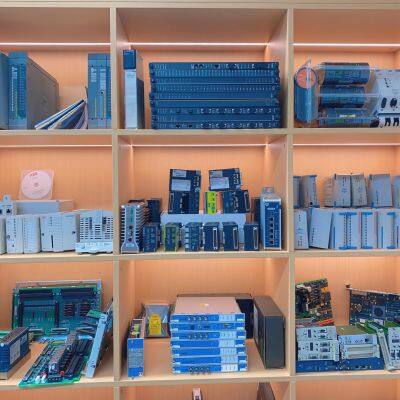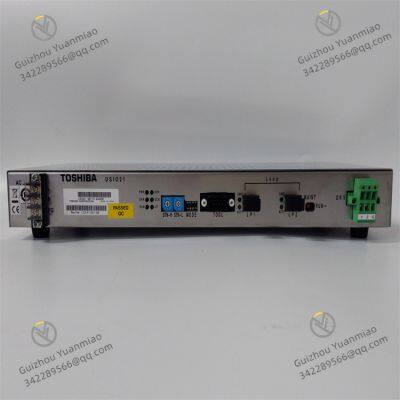Home > Products > Other Brands > TOSHIBA USIO21 Distributed Control System
TOSHIBA USIO21 Distributed Control System
- T/T PayPal Western Union
You May Like
Product Details
| Material | Other, Global universal model | Condition | Other, Global universal model | |
| Task | Other, Global universal model | Mathematical Model | Other, Global universal model | |
| Signal | Other, Global universal model | Customized | Non-Customized | |
| Structure | Other, Global universal model | Operating temperature | -200°C to 1000°C | |
| Output voltage | 100-240V AC |
Product Description
Company Profile

Main products: Covering globally renowned brands: Bently Nevada, Triconex, Woodward, Foxboro, Westinghouse, Reliance, Schneider Modicon, ABB, AB (Allen-Bradley), Motorola, GE Fanuc, Yaskawa, Bosch Rexroth Rexroth, ACSO, YOKOGAWA, Rexroth, NI, ICS Triplex, Kollmorgen, Mitsubishi, MOOG, Emerson, B&R B&r, SST, ALSTOM, KUKA EPRO, LAM HIMA dark Horse, HONEYWELL, prosoft, AMAT, SIEMENS, etc. The product categories include: DCS system accessories, robot system spare parts, large servo system spare parts, etc., which are widely used in power, chemical, metallurgy, intelligent manufacturing and other fields.
Contact Us

- Guizhou Yuanmiao Automation Equipment Co., Ltd.
- Contact nameyezi Chat Now
- AddressXixiu District, Anshun, Guizhou
Product Categories
New Products
-
STEC S83-1003-01 Controller Module
-
SCHROFF MPS022 DC Power Supply Module
-
SBS VIPC616 91611524 4-slot 6U VME IndustryPack Carrier
-
SAT CM3141-02-03 Proximitor Seismic Monitor
-
SAT CM3142-01-03 Proximitor Seismic Monitor
-
SAT RM3141-01-02 Proximitor Seismic Monitor
-
RAMIX PMC008A 700502 PMC to Mezzanine Adapter
-
RAMIX PMC237C-008EMI Expansion Module
-
TeIKOOR PSMU-350-3 CPCIAC-6U-500 900-7002-10 Power Supply Module
-
METSO DPU-MR Processing Unit
-
METSO IOP302 Control Module
-
METSO IOP304 Control Module
-
METSO IOP331 Intelligent Operations Platform Module
-
METSO IOP345 Digital Input Module
-
METSO PDP401 Distributed Processing Unit
-
METSO PDP601 Distributed Processing Unit
-
METSO D100644 Controller
-
METSO IOP351 Relay Output Module
-
ABB PPD513A-23-111615 magnetic excitation controller
-
TRICONEX Safety Instrumented System (SIS) 4351B control module
-
Bentley Nevada 3500/22M Transient data interface module
-
Bently Nevada 3500/15-05-05-00 power module
-
Triconex 3009 processor module
-
ABB GFD563A102 3BHE046836R0102 Excitation Convection Interface Module
Popular Searches
- battery charger
- laptop adapter
- spare parts
- rotary compressor
- Laptop Charger
- laptop battery
- toner cartridge
- opc drum
- copier toner
- Excavator Part
- laser toner
- notebook adapter
- laser toner cartridge
- mainboard
- Laptop Motherboard
- motherboard
- Compatible Toner Cartridge
- Heat Lamp
- rexroth
- ultrasound transducer
- Ultrasound Transducer Probe
- tec
- black printer
- Toshiba Developer
Find Similar Products By Category
- Electrical & Electronics > Electrical Control System
- Please Enter your Email Address
- Please enter the content for your inquiry.
We will find the most reliable suppliers for you according to your description.
Send Now-
 yezi
Hi there! Welcome to my shop. Let me know if you have any questions.
yezi
Hi there! Welcome to my shop. Let me know if you have any questions.
Your message has exceeded the limit.

- Contact supplier for lowest price
- Customized Request
- Request Sample
- Request Free Catalogs
Your message has exceeded the limit.
-
Purchase Quantity
-
*Sourcing Details
Your inquiry content must be between 10 to 5000 characters.
-
*Email
Please enter Your valid email address.
-
Mobile






